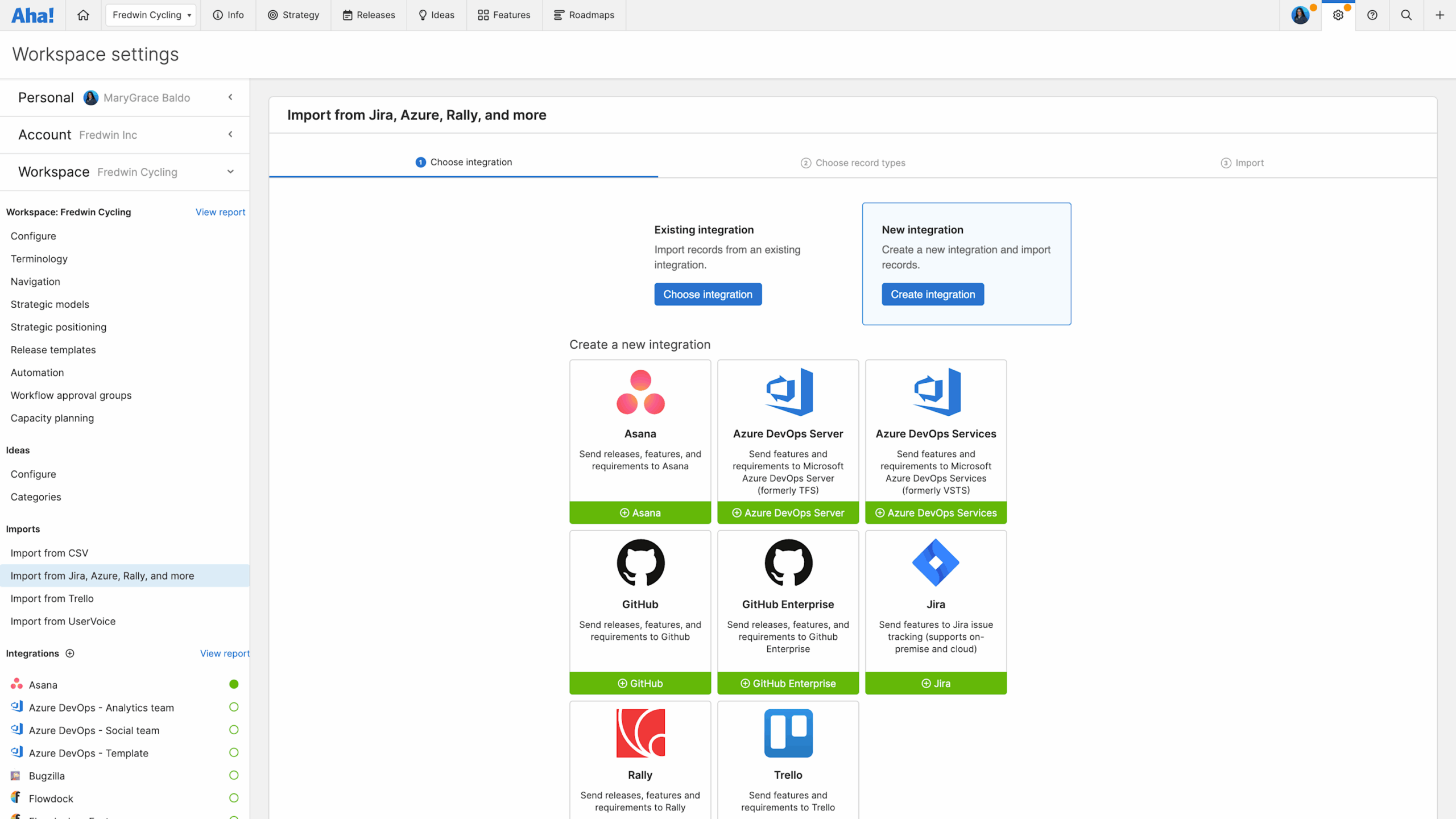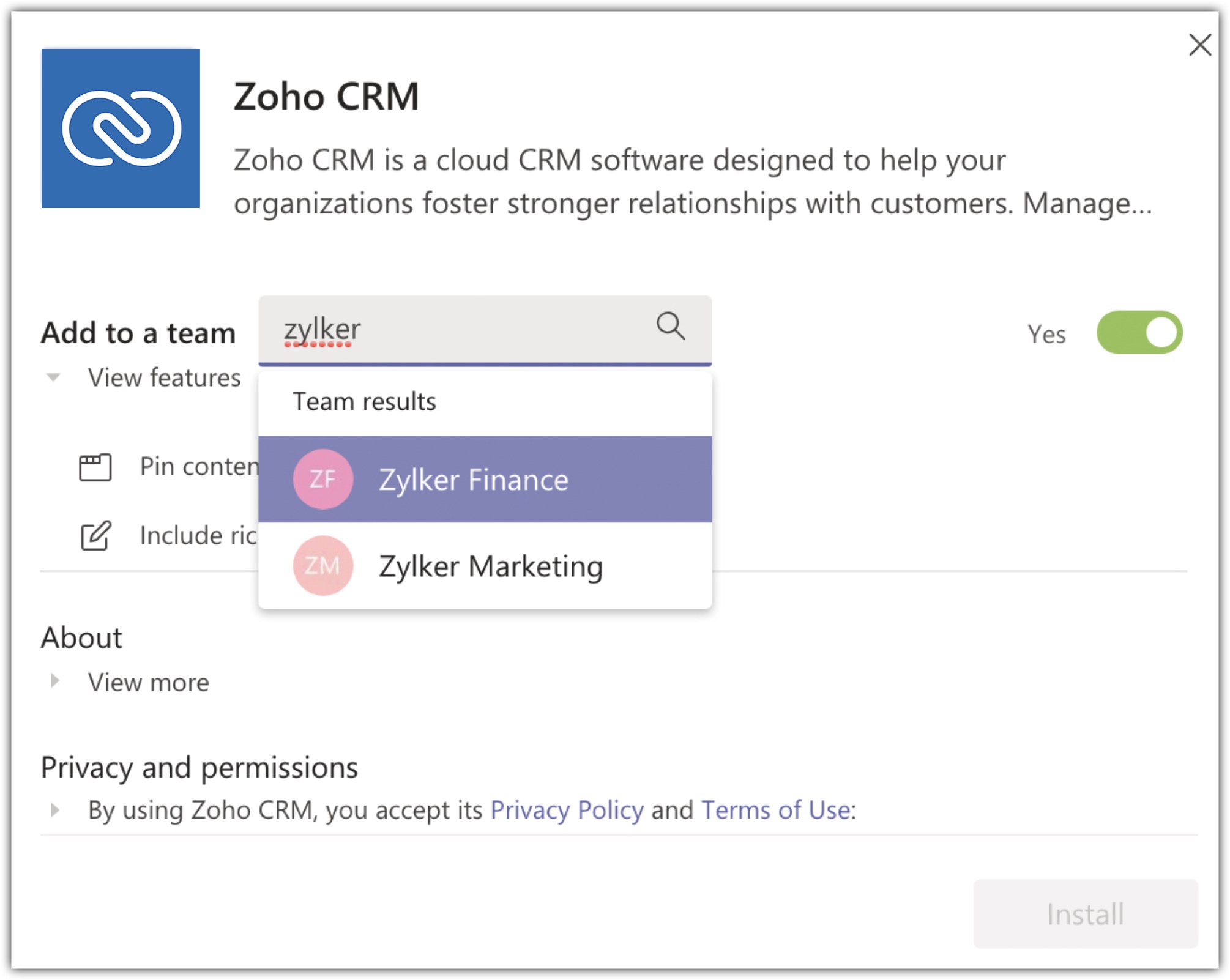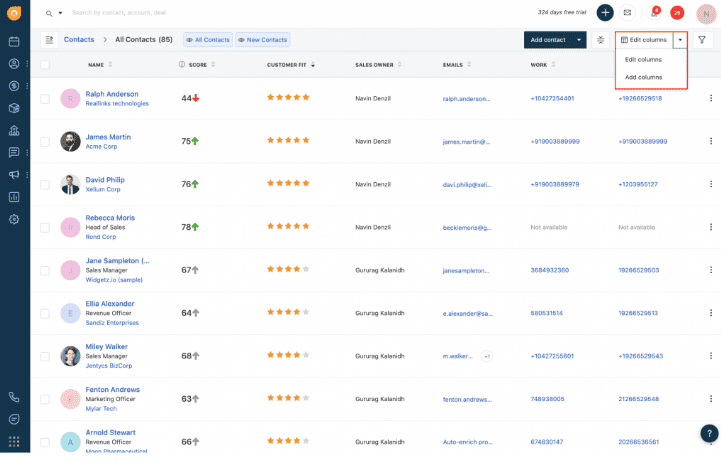Small Business CRM Implementation: Your Step-by-Step Guide to Success
Small Business CRM Implementation: A Comprehensive Guide
So, you’re a small business owner, and you’re thinking about implementing a CRM (Customer Relationship Management) system. Smart move! A well-implemented CRM can be a game-changer, helping you streamline your operations, boost sales, and build stronger customer relationships. But where do you even begin? This guide is designed to walk you through the entire process, from the initial planning stages to the final stages of optimization. We’ll break down the steps, offer practical tips, and help you avoid common pitfalls. Get ready to transform your business!
What is a CRM and Why Do You Need One?
Before we dive into the implementation, let’s make sure we’re all on the same page. CRM software is a tool that helps businesses manage their interactions with current and potential customers. It’s much more than just a contact list; it’s a central hub for all customer-related data, including:
- Contact information
- Communication history (emails, calls, etc.)
- Sales opportunities
- Marketing campaigns
- Customer service interactions
Why is a CRM so important for small businesses? Here are a few key benefits:
- Improved Customer Relationships: By having all your customer data in one place, you can personalize your interactions and provide better service.
- Increased Sales: CRM helps you track leads, manage your sales pipeline, and close more deals.
- Enhanced Efficiency: Automate repetitive tasks, freeing up your time to focus on more important things.
- Better Data Analysis: Gain valuable insights into your customers and your business performance.
- Improved Collaboration: Keep your team on the same page, ensuring everyone has access to the information they need.
Simply put, a CRM system can make your small business more efficient, more profitable, and more customer-centric. It’s a pivotal investment that can really make a difference.
Step 1: Define Your Goals and Requirements
Before you start shopping for CRM software, you need to figure out what you want to achieve. What problems are you trying to solve? What are your specific goals? This is where the planning begins. Think about what you want your CRM to do for your business. The more specific you are, the better. Here’s what you should consider:
- Identify Pain Points: What are the biggest challenges you’re facing in your current customer management processes? Are you losing track of leads? Are you struggling to provide timely customer service?
- Set Clear Objectives: What do you want to achieve with a CRM? Increase sales? Improve customer satisfaction? Reduce administrative tasks?
- Define Key Features: What features are essential for your business? Do you need sales automation, marketing automation, customer service tools, or all of the above?
- Consider Your Budget: How much are you willing to spend on a CRM system? Pricing varies widely, so it’s important to set a budget.
- Assess Your Team’s Needs: Who will be using the CRM, and what are their technical skills? Choose a system that’s easy to use and meets the needs of your team.
Once you’ve defined your goals and requirements, create a detailed list. This list will be your roadmap throughout the implementation process. It will help you choose the right CRM, configure it effectively, and measure your success.
Step 2: Choose the Right CRM Software
With your goals and requirements defined, it’s time to start researching CRM software. The market is vast, with options ranging from simple, free tools to complex, enterprise-level systems. Choosing the right one for your small business is crucial. Here’s how to narrow down your choices:
- Research Different CRM Providers: Look at popular options like HubSpot, Salesforce, Zoho CRM, Pipedrive, and Freshsales. Read reviews, compare features, and explore pricing plans.
- Consider Your Business Size and Needs: Some CRM systems are better suited for small businesses, while others are designed for larger enterprises. Choose a system that fits your current needs and has the potential to scale as your business grows.
- Evaluate Key Features: Make sure the CRM offers the features you need, such as contact management, sales automation, marketing automation, and customer service tools.
- Assess Integrations: Does the CRM integrate with other tools you use, such as your email marketing platform, accounting software, and social media channels? Integration is key to streamlining your workflow.
- Look at Ease of Use: A CRM is only effective if your team actually uses it. Choose a system that’s user-friendly and easy to learn.
- Consider Pricing and Support: Compare pricing plans and see what level of support is offered. Make sure you understand the costs involved and the support options available if you need help.
- Take Free Trials: Most CRM providers offer free trials. Take advantage of these to test out different systems and see which one best fits your needs.
Choosing the right CRM is a big decision. Take your time, do your research, and don’t be afraid to ask for help. Consider your business’s specific needs and choose a system that will help you achieve your goals.
Step 3: Data Migration and Preparation
Once you’ve chosen your CRM, the next step is to migrate your existing data. This can be a complex process, so careful planning is essential. The quality of your data will directly impact the success of your CRM implementation. Here’s a detailed look at data migration and preparation:
- Data Audit and Cleaning: Before you migrate any data, take the time to audit your existing data sources. Identify and eliminate duplicates, correct errors, and standardize your data formats. This will ensure your CRM is populated with clean, accurate information.
- Data Backup: Always back up your data before you start the migration process. This will protect you from data loss in case something goes wrong.
- Data Mapping: Determine how your data will be organized in your new CRM. Map the fields from your old system to the corresponding fields in your new CRM. This ensures that data is transferred correctly.
- Data Import: Most CRM systems offer data import tools that allow you to upload your data in a CSV or Excel format. Follow the instructions provided by your CRM provider to import your data.
- Data Validation: After the data has been imported, validate the data to make sure everything was transferred correctly. Check for any missing data or errors.
- Data Security: Ensure your data is secure during the migration process. Use secure file transfer methods and protect your data from unauthorized access.
Data migration can be a time-consuming process, but it’s essential for a successful CRM implementation. By taking the time to clean, prepare, and migrate your data carefully, you’ll set your CRM up for success.
Step 4: CRM Configuration and Customization
Now it’s time to configure your CRM. This is where you tailor the system to meet the specific needs of your business. Configuration involves setting up the features, settings, and workflows that will make your CRM work for you. Here’s what you need to do:
- User Setup: Create user accounts for each member of your team and assign appropriate roles and permissions. This will control who can access and modify certain data.
- Field Customization: Customize the fields in your CRM to capture the specific information you need. Add custom fields to track unique data points relevant to your business.
- Workflow Automation: Set up automated workflows to streamline your processes. For example, you can automate lead assignment, email notifications, and task creation.
- Sales Pipeline Setup: Configure your sales pipeline to match your sales process. Define the different stages of your pipeline and set up automated actions for each stage.
- Integration Setup: Integrate your CRM with other tools you use, such as your email marketing platform, accounting software, and social media channels.
- Testing: Test all of your configurations to make sure they’re working correctly. Run test cases to ensure that your workflows and automations are functioning as expected.
The more you customize your CRM to fit your business, the more effective it will be. Make sure to involve your team in the configuration process so that they can provide feedback and ensure that the system meets their needs.
Step 5: Training and Onboarding Your Team
A CRM is only as good as the people who use it. Training your team is a critical step in the implementation process. Proper training ensures that your team understands how to use the CRM effectively and that they adopt it into their daily workflows. Here’s how to approach training and onboarding:
- Develop a Training Plan: Create a training plan that outlines the training objectives, content, and schedule. Tailor the training to the different roles within your team.
- Provide Comprehensive Training: Offer training sessions that cover all aspects of the CRM, including contact management, sales automation, marketing automation, and reporting. Use a variety of training methods, such as online tutorials, in-person workshops, and hands-on exercises.
- Create User Guides and Documentation: Develop user guides and documentation to help your team members learn and use the CRM. Include step-by-step instructions, screenshots, and FAQs.
- Encourage Adoption: Emphasize the benefits of using the CRM and encourage your team members to embrace it. Provide ongoing support and answer any questions they may have.
- Monitor User Activity: Track how your team is using the CRM and identify any areas where they may need additional training or support.
- Provide Ongoing Support: Offer ongoing support to your team members, such as regular check-ins, refresher training, and access to online resources.
Proper training and onboarding will ensure that your team is comfortable using the CRM and that they can leverage its features to improve their performance. It’s an investment that will pay off in the long run.
Step 6: Testing and Go-Live
Before you fully launch your CRM, it’s crucial to conduct thorough testing. This ensures that everything is working correctly and that your team is prepared for the transition. Testing and go-live involve the following steps:
- User Acceptance Testing (UAT): Have your team members test the CRM to ensure that it meets their needs and that it’s easy to use. Collect feedback and make any necessary adjustments.
- Data Validation: Verify that all your data has been migrated correctly and that it’s accurate and complete.
- Workflow Testing: Test your automated workflows to ensure that they are functioning as expected.
- Integration Testing: Test all your integrations to make sure they are working properly.
- Go-Live Plan: Create a go-live plan that outlines the steps you will take to transition to the new CRM. This should include a timeline, communication plan, and rollback strategy.
- Communication: Communicate the go-live plan to your team and keep them informed throughout the process.
- Post-Implementation Support: Provide ongoing support to your team after the CRM has gone live. Address any issues or questions they may have.
A well-executed go-live plan will minimize disruption and ensure a smooth transition to your new CRM. It’s a crucial step to a successful implementation.
Step 7: Measuring and Optimizing Your CRM
The implementation of your CRM isn’t a one-time event; it’s an ongoing process. To get the most out of your CRM, you need to measure its performance and continuously optimize it. This is where the real magic happens. Here’s how to measure and optimize your CRM:
- Define Key Performance Indicators (KPIs): Identify the KPIs that are most important to your business. These might include sales revenue, customer acquisition cost, customer satisfaction, and lead conversion rates.
- Track Your KPIs: Use your CRM’s reporting features to track your KPIs. Generate reports and dashboards to monitor your progress.
- Analyze Your Data: Analyze your data to identify trends, patterns, and areas for improvement.
- Identify Areas for Improvement: Based on your data analysis, identify areas where you can optimize your CRM. This might involve adjusting your workflows, customizing your settings, or providing additional training.
- Make Adjustments: Make the necessary adjustments to your CRM to improve its performance.
- Regular Reviews: Regularly review your KPIs and your CRM’s performance to ensure that it’s meeting your business needs.
- Seek Feedback: Get feedback from your team members on how they’re using the CRM and what improvements they would like to see.
By continuously measuring and optimizing your CRM, you can ensure that it’s helping you achieve your business goals. It’s a dynamic process that requires ongoing attention and effort.
Common CRM Implementation Challenges and How to Overcome Them
Implementing a CRM can be a complex process, and you may encounter some challenges along the way. Here are some common challenges and how to overcome them:
- Lack of Planning: Failing to plan adequately is one of the biggest mistakes. Spend enough time upfront defining your goals, requirements, and selection criteria.
- Poor Data Quality: Bad data can undermine your entire CRM implementation. Invest time in data cleaning and preparation.
- Lack of User Adoption: If your team doesn’t use the CRM, it’s useless. Provide adequate training, encourage adoption, and address any resistance.
- Insufficient Training: Ensure that your team is properly trained on all aspects of the CRM.
- Integration Issues: Make sure your CRM integrates seamlessly with other tools you use.
- Budget Overruns: Carefully plan your budget and stick to it. Consider all costs, including software, implementation, training, and ongoing maintenance.
- Scope Creep: Avoid adding too many features or customizations at once. Start with the essentials and gradually add more features as needed.
By anticipating these challenges and taking steps to address them, you can increase your chances of a successful CRM implementation.
Conclusion: Embracing the Power of CRM
Implementing a CRM system is a significant step for any small business. It’s an investment in your future, promising to revolutionize how you connect with customers, manage your sales, and drive growth. This guide has provided a comprehensive roadmap, from defining your needs to optimizing your system for peak performance. Remember, the key to success lies in careful planning, choosing the right software, thorough training, and a commitment to continuous improvement. Don’t be afraid to seek help from CRM experts or consultants if you need it. With the right approach, you can harness the power of CRM to transform your small business and achieve lasting success.
So, are you ready to take the plunge? Your customers are waiting! This is more than just a software implementation; it’s about building stronger relationships, streamlining your operations, and ultimately, thriving in today’s competitive market. Start today, and watch your business flourish!




